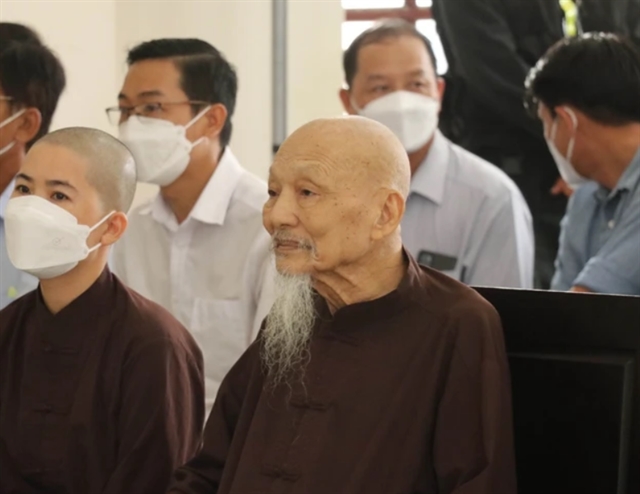 Society
Society


|
| A model for growing clean vegetables in Trà Vinh City’s Ward 9. — VNA/VNS Photo Thanh Hòa |
TRÀ VINH — The Cửu Long (Mekong) Delta province of Trà Vinh plans to use 7,400ha of low-yield rice fields for growing other crops or fruits or for aquaculture farming this year.
The local Department of Agriculture and Rural Development is encouraging farmers to use 5,700ha to grow short-term crops like corn, sweet potato and peanut, 550ha for growing fruits, 240ha for growing coconuts and the rest for simultaneously farming rice and aquatic species.
In Trà Cú District, which is normally affected by saltwater intrusion in the dry season, rice yields are very low.
On more than 2,200ha of low-yield rice fields, the district will switch to short-term crops or breed snakehead fish, black tiger shrimp and white-legged shrimp this year.
Lê Hồng Phúc, chairman of the district People’s Committee, said to help farmers to effectively restructure, the district is zoning concentrated growing areas based on market demand for various produce.
It is providing support to farmers to join co-operatives, build brand names and borrow on easy terms, he said.
It would teach them farming techniques to improve quality, reduce costs and improve incomes, he said.
The province has already helped make the switch on more than 16,000ha since 2014, according to the department.
Most of the new crops offer many times higher incomes than rice, it said.
Trà Vinh has more than 17,000ha of coastal sand dunes, the largest area in the Mekong Delta, mostly in Cầu Ngang, Duyên Hải, Trà Cú and Châu Thành districts and Duyên Hải Town.
Rice yields here are very low because of lack of water during the dry season.
Trần Văn Trôi, who has switched to growing two other crops along with just one rice crop each year on his 1.8ha rice field in Cầu Ngang District’s Mỹ Long Bắc Commune, said he used to grow three rice crops annually and earn VNĐ40-50 million (US$1,170-2,140) each time.
But in winter-spring 2018-19, after growing water melon, he earned nearly VNĐ200 million ($8,590), he said.
He is now growing pumpkins and hopes to earn a similar amount, he said.
Võ Văn Thủy of Châu Thành District’s Thanh Mỹ Commune said with encouragement from local authorities, he has switched to growing other crops on his rice field since 2015.
His income has tripled or quadrupled as a result, he said.
Phạm Minh Truyền, director of the province’s Department of Agriculture and Rural Development, said the province has a large area of infertile rice fields because of lack of water and saltwater intrusion in the dry season.
It has encouraged farmers to restructure their crops to improve incomes and adapt to climate change, he said.
The province has adopted many policies to help farmers restructure their agricultural production like providing financial support for rice growers to switch to corn, developing agricultural co-operatives and applying good agricultural practice.
In 2017-18, it earmarked VNĐ46 billion ($1.97 million) to help farmers grow clean vegetables, improve fruit and coconut orchards, breed aquatic species, and switch to growing high-value crops on low-yield rice fields. — VNS









